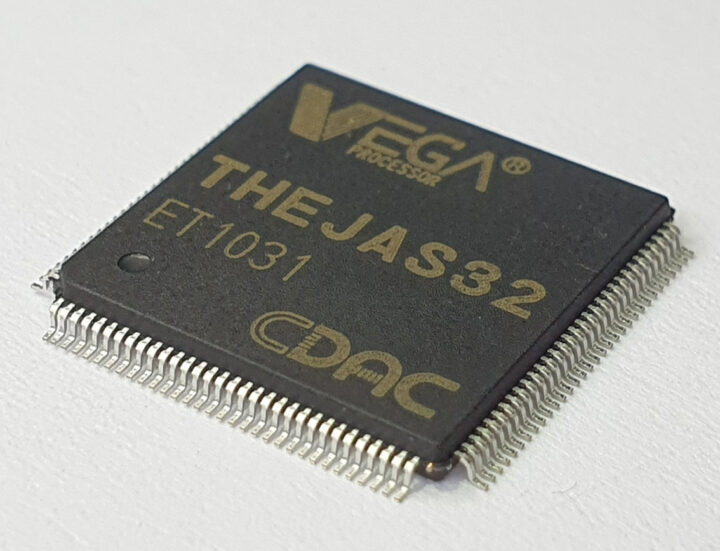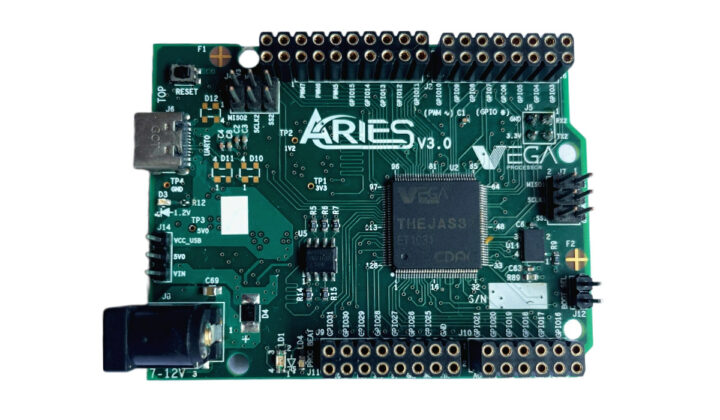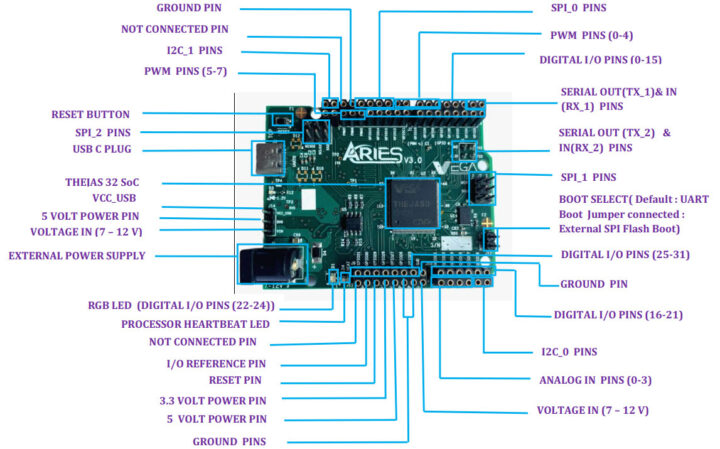ARIES v3.0 is an Arduino-inspired development board with the made-in-India 100 MHz THEAJS32 ASIC with the VEGA ET1031 RISC-V microprocessor, 256KB of internal SRAM, and various I/Os. Not to be confused by the recent FIVEberry RISC-V SBC made by ARIES Embedded…
We first wrote about VEGA RISC-V processors designed in India in February 2022, and at the time, the government worked on five RISC-V processor designs ranging from a single-core 32-bit RISC-V microcontroller-class processor to a Linux-capable quad-core 64-bit out-of-order processor, with the entry-level THEJAS32 and THEJAS64 SoCs based on respectively VEGA ET1031 and VEGA AS1061 cores running on an ARTY A7 FPGA board. But good progress has been made since then, and they have tapped out the THEJAS32 processor and manufactured some development boards such as the ARIES v3.0.
ARIES v3.0 development board specifications:
- MCU – THEJAS32 VEGA ET1031 32-bit 3-stage in-order RISC-V ( RV32IM) microcontroller @ 100 MHz with 256KB SRAM
- Storage – 2MB SPI flash
- USB – USB Type-C port for programming
- Expansion
- Arduino UNO-like headers with up to 32x GPIOs, 8x PWM, 4x analog inputs, 1x SPI, 3x UART, 2x I2C
- 2x 6-pin SPI headers
- DC Current per I/O Pin – 12 mA
- I/O Voltage – 3.3 V
- Misc – Reset button, Boot select jumper (UART or SPI flash), CPU heartbeat LED, RGB LED
- Power Supply – 7-12V DC via a power barrel jack or header
- Dimensions – 78 x 66 mm
The board is programmable in the Arduino IDE, and you just need to add a board manager URL to enable support, as explained in the documentation which only lists Windows 10 64-bit or above as the supported host, so it’s quite possible the toolchain won’t work on Linux or macOS just yet.
The Centre for Development of Advanced Computing (C-DAC), funded by the Ministry of Electronics and Information Technology, Government of India, says the board targets low-power IoT, sensor fusion, Smart Meters, System supervisors, Remote sensors, Wearable devices, toy and electronic education equipment, legacy 8/16-bit applications, industrial networking, and more…

The ARIES v3.0 development board is actually the fourth board based on the THEJAS32 RISC-V MCU, and there’s also an IoT model with u-Blox NINA-W10 WiFi 4 and Bluetooth 4.2 module. You’ll find more details on the product page, and if you are in India or know somebody there, you may be able to register and purchase one or more boards for around 1,000 Rs each, or about $12.

Jean-Luc started CNX Software in 2010 as a part-time endeavor, before quitting his job as a software engineering manager, and starting to write daily news, and reviews full time later in 2011.
Support CNX Software! Donate via cryptocurrencies, become a Patron on Patreon, or purchase goods on Amazon or Aliexpress






